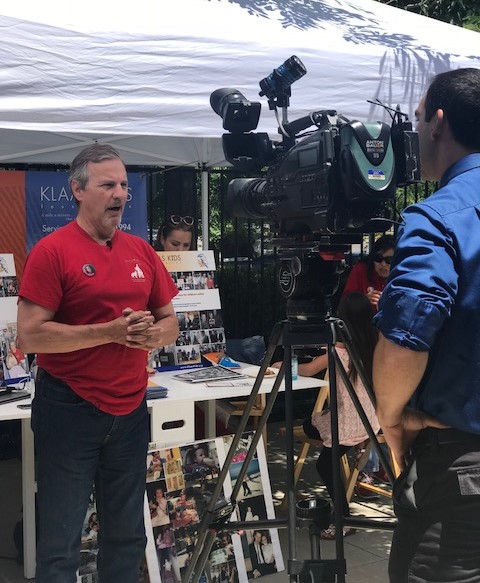 Marc Klaas, a high-profile activist on behalf of missing persons, was among participants in the "Missing in California" program at Sacramento State on June 9. (Sacramento State/Dixie Reid)
Marc Klaas, a high-profile activist on behalf of missing persons, was among participants in the "Missing in California" program at Sacramento State on June 9. (Sacramento State/Dixie Reid)Paula Pile Pope, a 19-year-old newlywed, stormed out of a campsite near Fresh Pond, Calif., after arguing with her husband – and seemingly disappeared forever. Nearly 45 years later, her three younger sisters were at Sacramento State, hoping to learn what became of her.
They were among the dozens of men and women who attended “Missing in California” on Saturday, June 9, at the Harper Alumni Center. It was the first-ever statewide effort to provide loved ones with answers and, perhaps, closure.
“Paula was only 4-foot, 10-inches and weighed 85 pounds, so they suggested that maybe she was misidentified as a child, because she was so small,” said her sister Carolyn Pile.
Local law enforcement and other agencies from throughout California came together for the free, daylong event, which connected loved ones to resources – including the National Missing and Unidentified Persons System (NamUs) – that might help them locate long-absent family or friends.
More than 19,660 Californians are reported missing. Their loved ones are left to wonder if they’re dead or simply chose to walk away.
“The hardest thing about a missing person is that there’s no crime scene, no evidence to lead us, nothing,” says Paige Kneeland, a Sacramento County Sheriff’s deputy who has worked missing-persons cases for 12 years and organized the statewide event. “I empathize with people who simply want answers.”
Families brought photographs of the missing, along with medical and dental records, to give law enforcement investigators additional information to help solve the case. Some family members, including Joella Aragon, provided DNA samples.
Her brother, Frederick, disappeared from Vacaville 30 years ago. She learned Saturday that his name was already in the national missing persons database.
“My brother, sister and dad think he’s dead,” Aragon said. “I just want to find out what happened to him, and this (event) gave me an avenue to look again.”
A dozen students from Sacramento State’s Law Enforcement Candidate Scholars (LECS) program were on hand to help families navigate the various reporting stations and paperwork. Casey Claudius, a criminal justice major who hopes to join the California Highway Patrol after graduation, assisted, among others, Paula Pile Pope’s three sisters.
He volunteered to help out at “Missing in California,” he said, “because it seemed like a good opportunity to help people and engage with the public.”
Among the participating law enforcement agencies were the Sacramento County Sheriff’s Department, Sacramento Police Department, Sacramento State Police Department, California Department of Justice, and the Federal Bureau of Investigation (FBI).
Other resources included Opening Doors, WEAVE, the Mexico Consul General, and the California Rescue Dog Association. Marc Klaas, whose 12-year-old daughter, Polly, was kidnapped from her Petaluma home and murdered in 1993, was on hand to represent the KlaasKids Foundation.
Organizers also brought in interpreters to assist non-English speakers with Arabic, Chinese, Farsi, Hindi, Hmong, Punjabi, Russian, and Spanish. American Sign Language interpreters were available, as well.
Kneeland said she hopes that “Missing in California” will become an annual event.
“After working missing-persons cases for a couple of years, I realized that many are unreported, because they occurred before the national database came about in 1975,” she said. “Even then, it was localized to the New York area and took a while to catch fire and spread across the country.
"So anyone who went missing before 1980, if their information wasn’t manually entered into the system, it may not be in the database.”
As of Jan. 1, 2018, the national database shows that in addition to 19,660 missing Californians, the state has more than 3,200 cases of unidentified remains.
Reports filed during “Missing in California” will be assigned to the appropriate law enforcement agency, generally in the jurisdiction where the person went missing. Families will be given contact information for the assigned agency, in case they want to follow up with investigators.
“If we can bring closure to even one family, this will have been worth it,” said Sgt. Shaun Hampton, of the Sacramento County Sheriff’s Department. “Not knowing if someone is dead or alive, these families have to live with that every single day.” – Dixie Reid
